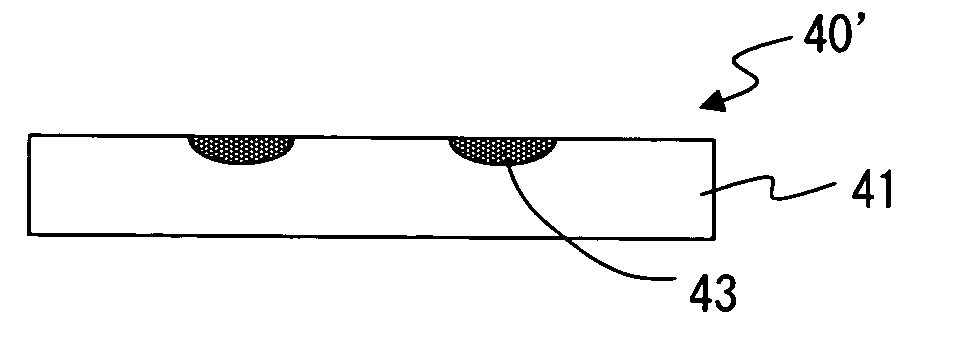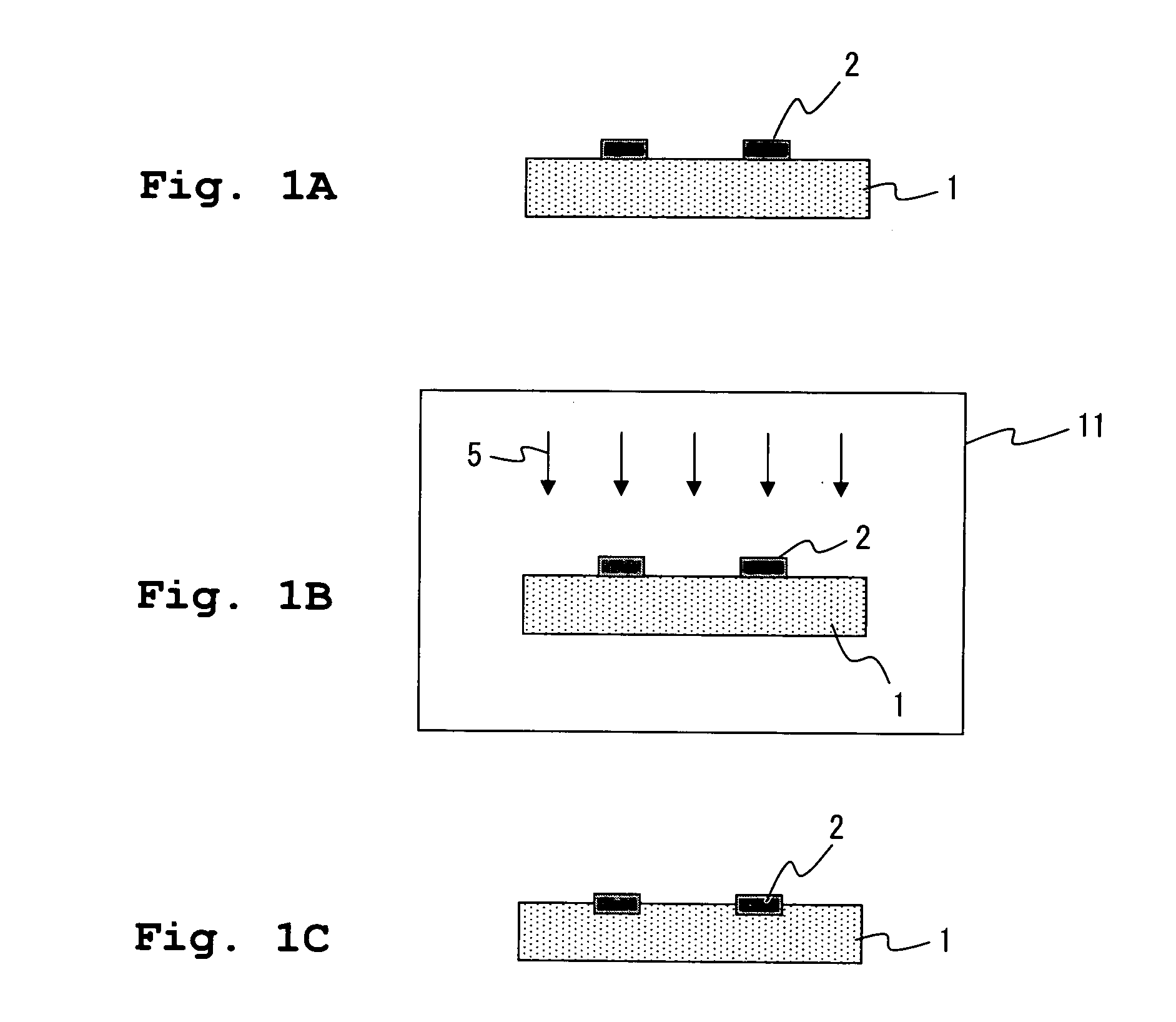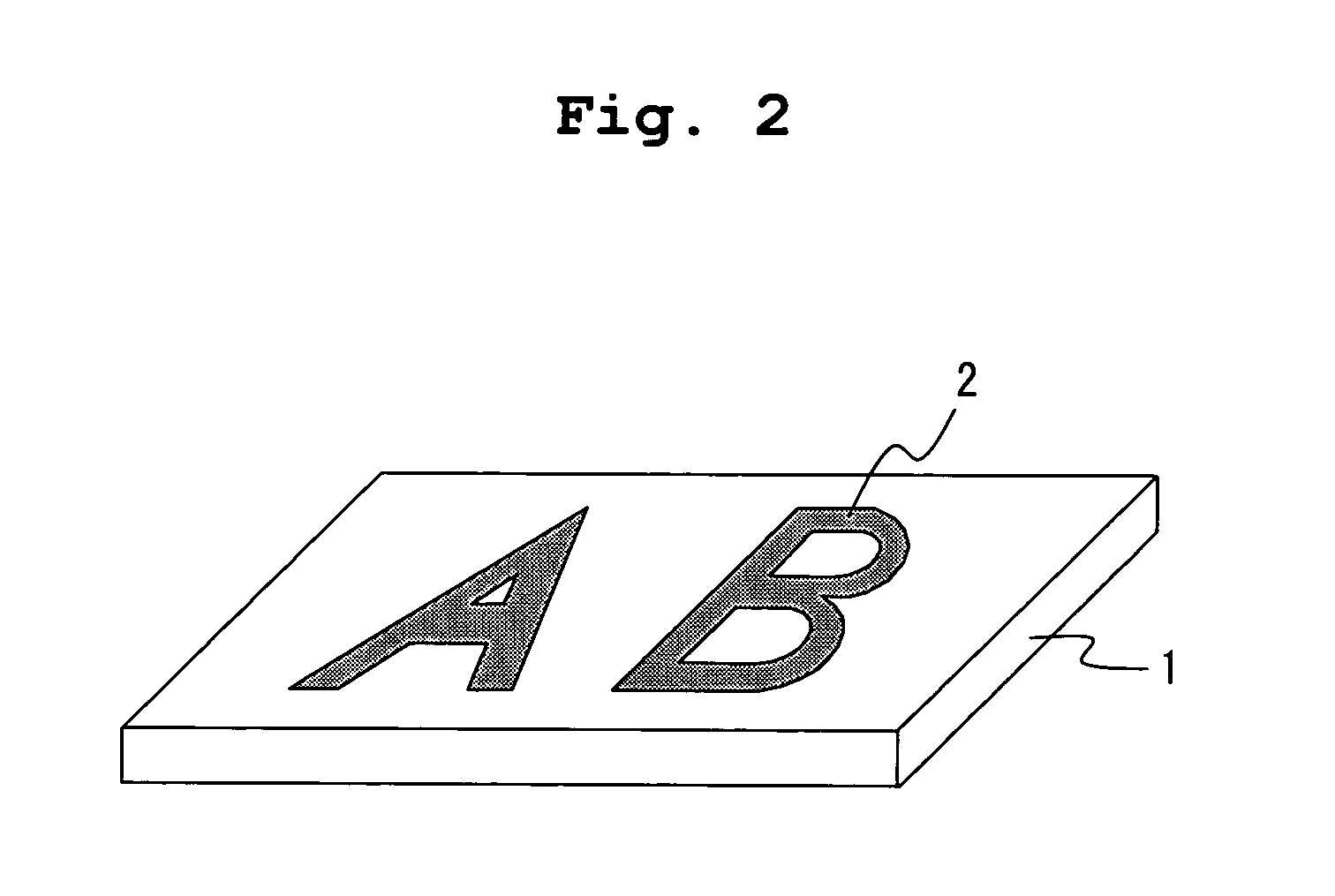Method for modifying surface of polymer substrate, method for forming plated film on polymer substrate, method for producing polymer member, and coating member
a technology a surface modification, which is applied in the direction of liquid/solution decomposition chemical coating, instruments, synthetic resin layered products, etc., can solve the problems of increased costs, difficult to form a desired pattern, and difficult to selectively and precisely modify a portion of the surface of a polymer substrate with the technologies disclosed, etc., to inhibit the diffusion of metal complex
- Summary
- Abstract
- Description
- Claims
- Application Information
AI Technical Summary
Benefits of technology
Problems solved by technology
Method used
Image
Examples
example 1
[0148] In Example 1, an explanation is provided of a method for carrying out surface modification by applying a dye 2 (permeating substance) to the surface of a polymer substrate 1 (polymer substrate) in a character pattern (“A” and “B”), and only allowing the dye 2 to permeate into the polymer substrate 1 only at that region as shown in FIG. 2.
High-Pressure Device Used in Surface Modification Method
[0149] First, an explanation will be provided of the high-pressure device used in the surface modification method of Example 1 with reference to FIG. 3. FIG. 3 is a schematic diagram showing a configuration of a high-pressure device used in the surface modification method of this example. As shown in FIG. 3, a high-pressure device 100 is mainly composed of a high-pressure container 11, a CO2 tank 12, a supercritical fluid regulator 13, and pipes 16a and 16b which connect these constituent elements.
[0150] As shown in FIG. 3, the high-pressure container 11 includes a container body 33, ...
example 2
[0163] In Example 2, an example is explained in which the surface modification method of the present invention is applied to a plate used for biochemical analysis and so on referred to as micro TAS. The constitution of the micro TAS produced in this example is schematically shown in FIGS. 5A and 5B.
[0164] In the micro TAS 40 of this example, a pattern 42 of a permeating substance 43 as shown in FIG. 5A was formed on a polymer substrate 41. A polymer substrate made of polymethyl methacrylate resin and having a glass transition temperature Tg of about 100° C. (Asahi Chemical Industries, trade name: Delpet 560F) was used for the polymer substrate 41. Polyethyleneglycol (PEG) having an average molecular weight of about 1000 was used for the permeating substance 43 formed into the pattern 42. Namely, in this example, surface modification treatment was carried out which hydrophilized the surface region where the PEG 43 was applied by applying the PEG 43 to the surface of the polymer subs...
example 3
[0170] In Example 3, an example is explained in which the surface modification method of the present invention is applied to a micro TAS similarly as in Example 2. In this example, however, a preferable surface modification method is explained in the case of forming a finer permeating substance pattern in a polymer substrate as compared with that of Example 2.
[0171] Schematic diagrams showing a configuration of the micro TAS produced in this example are shown in FIGS. 6A and 6B. In the micro TAS 50 of this example, as shown in FIGS. 6A and 6B, a groove pattern 52 similar to the PEG pattern formed on the surface of the polymer substrate of the micro TAS produced in Example 2 was formed on the surface of a polymer substrate 51, and PEG 53 was applied into this groove pattern. In the micro TAS 50 of this example, the dimensions of the groove pattern 52 were as described below. The diameter of the circular portion 52a was 2 mm, the widths of the channel 52b and the branching channels 5...
PUM
| Property | Measurement | Unit |
|---|---|---|
| pressure | aaaaa | aaaaa |
| temperature | aaaaa | aaaaa |
| pressure | aaaaa | aaaaa |
Abstract
Description
Claims
Application Information
 Login to View More
Login to View More - R&D
- Intellectual Property
- Life Sciences
- Materials
- Tech Scout
- Unparalleled Data Quality
- Higher Quality Content
- 60% Fewer Hallucinations
Browse by: Latest US Patents, China's latest patents, Technical Efficacy Thesaurus, Application Domain, Technology Topic, Popular Technical Reports.
© 2025 PatSnap. All rights reserved.Legal|Privacy policy|Modern Slavery Act Transparency Statement|Sitemap|About US| Contact US: help@patsnap.com



